You don’t need letter of the week to teach children about letters. Read below about how to teach the alphabet with fun and meaningful activities, as well as why you should let go of letter of the week.
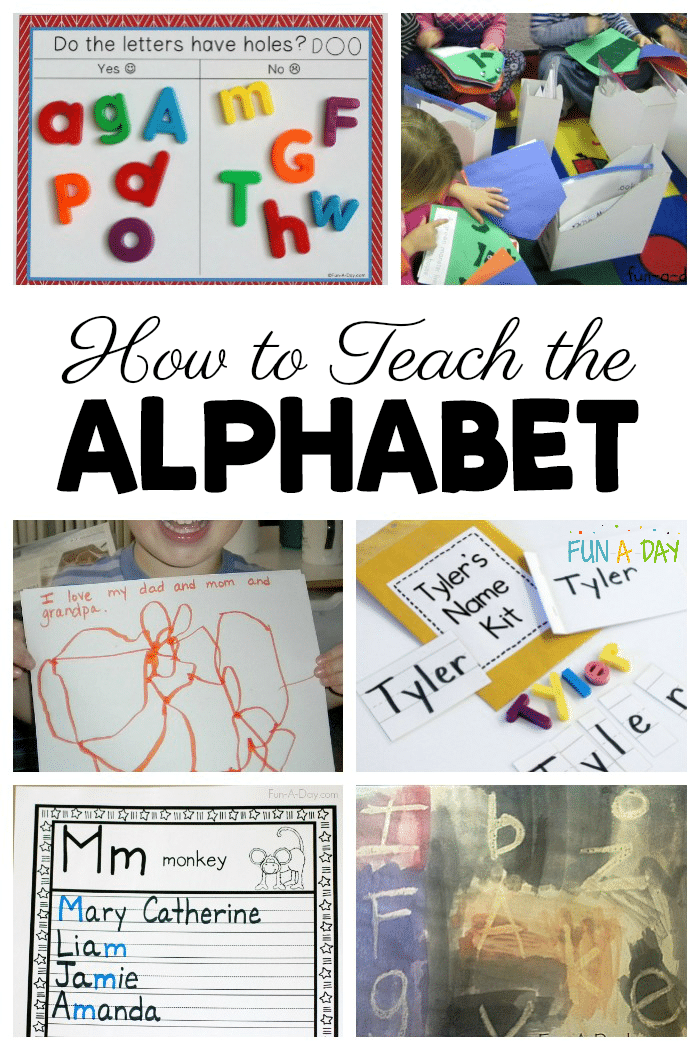
Related: More Alphabet Activities for Preschool
I know there’s a ton of information out there about teaching children letters. I want to throw my two cents in, as well, based on my own teaching experience.
Below is my professional (and personal, for that matter) opinion about how to get children learning about letters, with some specific examples. At the very end of this post, I will include links to research and other blogs dealing with this topic.
I may get commissions for purchases made through links in this post.
Let’s Talk About How Kids Learn
In case you’re wondering, when I say “how to teach the alphabet” I am referring to letter identification, letter sounds, and the use of letters to make up words.
A Quick Look at My Background
I obtained my teaching certificate with an emphasis in early childhood education, which means I received extra courses and fieldwork in teaching preschool through grade 3.
I spent 5 years teaching kindergarten, was trained in Reading Recovery (working with first graders who needed extra reading help), and taught pre-kindergarten for even longer than I taught kindergarten.
So it probably doesn’t surprise you that I’m passionate about early literacy, especially when we’re talking about children between the ages of 3 and 6.
How Children Learn
Young children love exploring the world around them, and they learn so much by doing just that. I’m sure you’ve heard that kiddos are like “little sponges”, and that is surely the truth.
They absorb knowledge through observing adults and peers, playing, and using their five senses. Real, meaningful experiences are essential to a young child’s learning process.
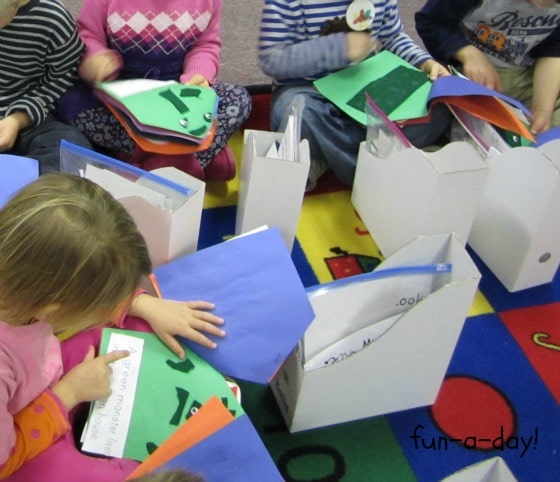
Related: Winter Read It Write It Build It Printable Letters
Why Is This Important When We Talk About How to Teach the Alphabet?
Since kids need real, meaningful experiences to learn, such experiences should be provided when they’re learning letters. This means that learning letters in a print-rich environment, with meaningful and contextual instruction, is ideal.
Use children’s names, their friends’ names, and environmental print when you begin to teach the alphabet to kids.
Connecting letters to something children already know, as well as things that mean something to the kids, helps the process.
Classroom word walls, shared and interactive writing, class-made books, and favorite stories are also incredibly helpful.
Why is Letter of the Week Inappropriate in Preschool Classrooms?
Teaching letters in isolation, such as with the classic “letter of the week”, just doesn’t make sense for how children learn.
It doesn’t correlate with everything we just discussed above about how kids learn.
In my opinion, it slows down how children learn letters and doesn’t help children make as many meaningful connections.
I know that many teachers use letter of the week because that’s within their comfort zones. Just remember it’s always great to try new things, even as a teacher!
What’s the Best Order to Teach Letters?
One question I often hear right after how to teach the alphabet is “What order should I teach letters?”
As I’ve mentioned a few times already, children learn best with meaningful activities. With activities that mean something to them.
So it stands to reason that using children’s names to teach letters is very meaningful to the kids.
I don’t recommend choosing a specific order of letters to teach children each and every time. A list like that is too uncompromising and doesn’t allow teachers the flexibility to change things as their children need.
Rather, I highly suggest you start with the initial letters in your students’ names. It will connect with the individual children, and it will help them connect with each other.
All while learning the letters of the alphabet.
Ideas for How to Teach the Alphabet
Now that I’ve shared why it’s important to use hands-on, meaningful lessons to teach the alphabet, let’s look at some specific examples.
Read to Your Students
Read, read, read. Oh, yes, and read some more!
Being read to shows children that words (and the letters that make up those words) have meaning.
It also shows children the correlation between our oral language and our written language.
Looking at words on a page, as they’re hearing the words spoken, provides an enormous amount of background knowledge for kids when it comes to letters, letter sounds, and words.
This is true even if the kids don’t know how to read those words yet.
Related: Alphabet Books for Preschoolers
Write with Your Students
Write down the children’s dictations about pictures they draw.
Work with the kids to write a class thank you note for a field trip.
Help the children write their names.
Let the children help you write about their art work.
Incorporate writing everyday.
Reading and writing go hand-in-hand, so teaching reading and teaching writing should as well. Learning to identify letters and comprehend letters sounds can easily be integrated into writing letters.
It’s another way for children to experience the alphabet and really see it in action. Which leaves you so many opportunities to teach the alphabet to your students.
Plus, writing involves movement which helps children to explore the learning in a different way.
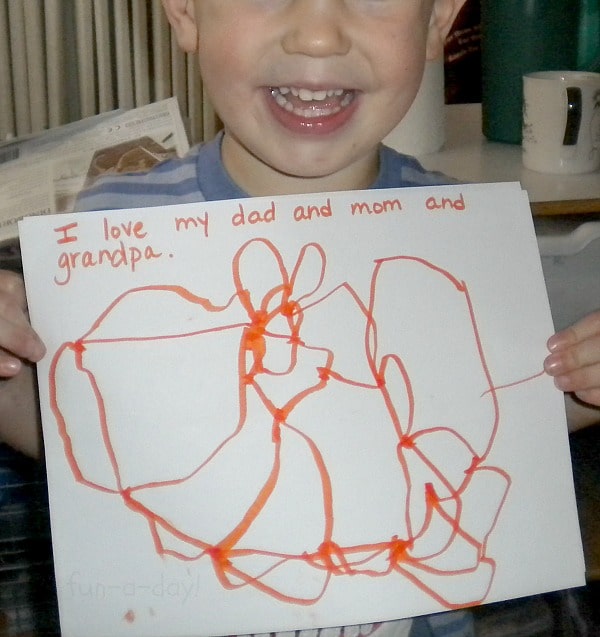
Related: Free Printable Class Sign-In Book
Make Name Kits
Put together a name kit with each child in your class.
Keep the name kits in your reading or literacy center so children can work on them throughout the school year.
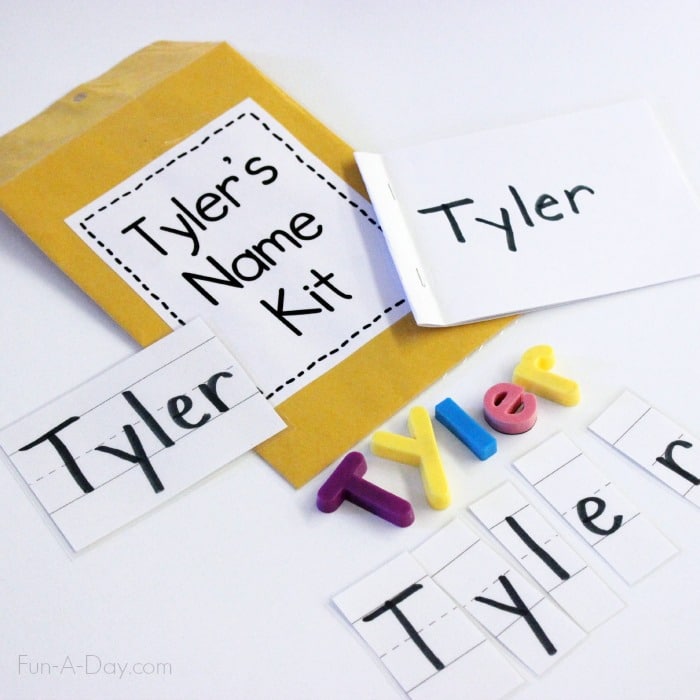
Related: Name Books for Preschool and Kindergarten
How to Teach the Alphabet with Individual Name Cards
Write each of your students’ names on a sentence strip.
Have the first letter in a different color, with the remaining letters written in black (so as to visually highlight the first letter of each name).
In small groups, or as a whole class, you can sort the names based on their first letter, how many letters are in each name, etc.
You can also play games with the kids’ names. Here’s one to try – Have each child hold her/his name, then call out letters and an action (ex: “if your name starts with M, jump up and down”).
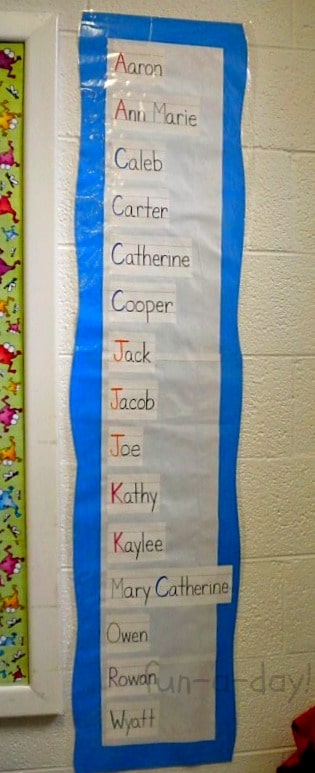
Related: 15+ Name Activities for Preschoolers
Make a Class Alphabet Book
As I keep mentioning, names are a wonderful starting place for teaching so many concepts to kids.
Combine a child’s love for her name with her curiosity about her friends’ names while teaching the alphabet with a class name book.
Have a page for each letter of the alphabet, with both the uppercase and lowercase letter represented at the top.
Over time, add children’s names in the book based on the letters in their names. For example, my first name is Mary.
So my name would be on the pages for Mm, Aa, Rr, and Yy.
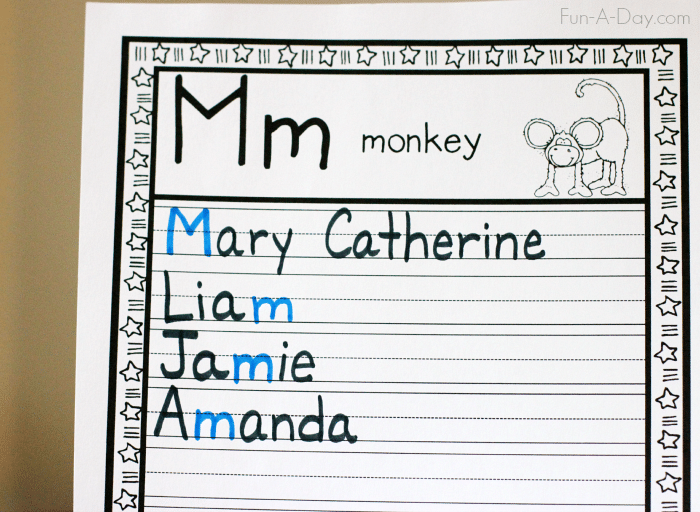
Related: Teaching the Alphabet with a Class Name Book
Sort Magnetic Letters
It sounds so very simple, but sorting magnetic letters really helps kids to focus on how letters are alike, how they’re different, and what shapes they are comprised of.
Ideas on how to sort the letters — by color, uppercase versus lowercase, letters with holes versus letters without holes, letters with straight lines versus letters without straight lines, etc.
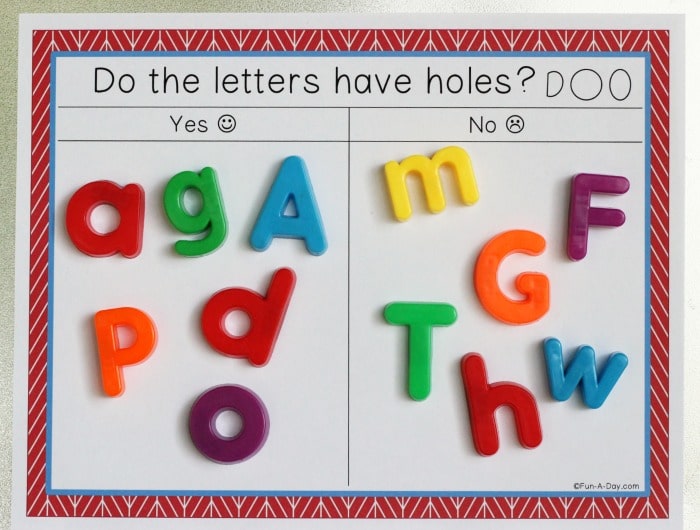
Sing ABC Songs
Yes, of course, the ABC song is a great one to sing, but don’t limit it to just that one.
Sing the alphabet to different tunes and rhythms, and break out many different alphabet songs.
Also, check out people like Dr. Jean and Jack Hartmann. They have fun, silly songs and dances that help teach the alphabet (as well as many other concepts).
Environmental Print Activities
Have children bring in pictures that represent stores and places around town that they recognize.
This could be cereal boxes, favorite snack boxes, ads from chain stores and grocery stores, pictures of road signs, etc.
These pieces of environmental print could be used for sorting based on initial letters/sounds, and they could also be made into their own bulletin board.
This would be a great resource to refer back to throughout the school day.
Use an Alphabet Chart
A good alphabet chart should have the letters in alphabetical order, should have both uppercase and lowercase letters listed, and should have picture cues for each letter.
Refer to the chart when you’re reading or writing (“oh, the word ‘run’ starts just like ‘r-r-rabbit’!”).
Run through the chart a few times a week, saying the letter names, letter sound, and picture prompt (“A, a, /a/, apple”).
Don’t overdo this, as it really shouldn’t take but a few minutes.
Create a Classroom Word Wall to Help Teach the Alphabet
Word walls in preschool don’t need to be complicated, and they are a great resource for teaching the alphabet.
Set yours up with each letter of the alphabet, and make sure to add photo prompts. Start the year out with the kids’ names on the word wall.
Compare the word wall to your alphabet chart and encourage the kids to read the word wall with pointers!
Consider adding environmental print for even more bang for your buck as you teach the alphabet.
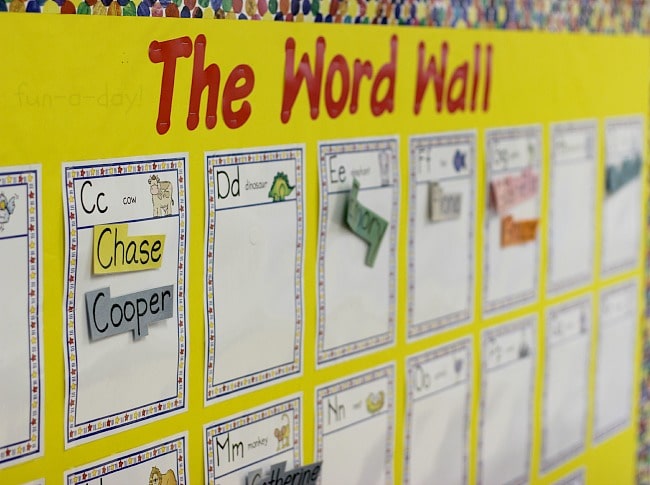
Alphabet Games for Kids
When you’re planning to teach the alphabet, don’t forget games involving letters!
There are so many games you can play. Letter bingo, letter matching games, letter memory, and name bingo are just a few ideas to start you off with.
Obviously, the above list is by NO MEANS exhaustive. There are so many ways to teach the alphabet in a meaningful, contextual way!
Use what the children know, help them make connections between what they know and what you want them to learn, and keep it fun.
I would love to hear any questions you have, as well as how you like to teach letters to the children.
How to Teach the Alphabet with Done-For-You Resources
Save some time as you plan your alphabet instruction by using resources from Preschool Teacher 101.
We have a variety of items that are ready to go and perfect for teaching the alphabet to young children:
More Reading About How to Teach the Alphabet
After I wrote this post, I went searching for more to share with you.
Here are just a few of the articles I read that share more information about how to teach the alphabet in a meaningful way:
“Whatever Happened to Developmentally Appropriate Practice in Early Literacy?” by Susan B. Neuman and Kathleen Roskos
Ideas from the Reading Recovery Council regarding phonemic awareness
“Reading Instruction and Play Go Hand-in-Hand” by Linda Ingleson
“Critical Components in Early Literacy — Knowledge of the Letters of the
Alphabet and Phonics Instruction” by Janice Wood & Bronwyn McLemore
No More Letter of the Week by Vanessa of Pre-K Pages
Originally published February 5, 2013. Updated with more photos and information.

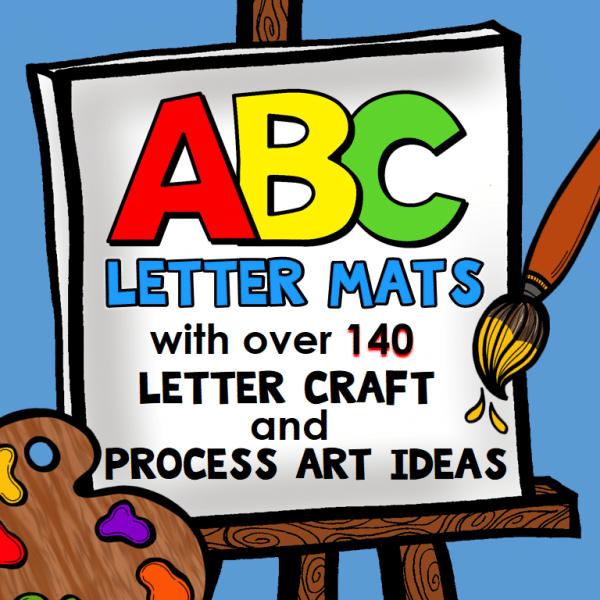
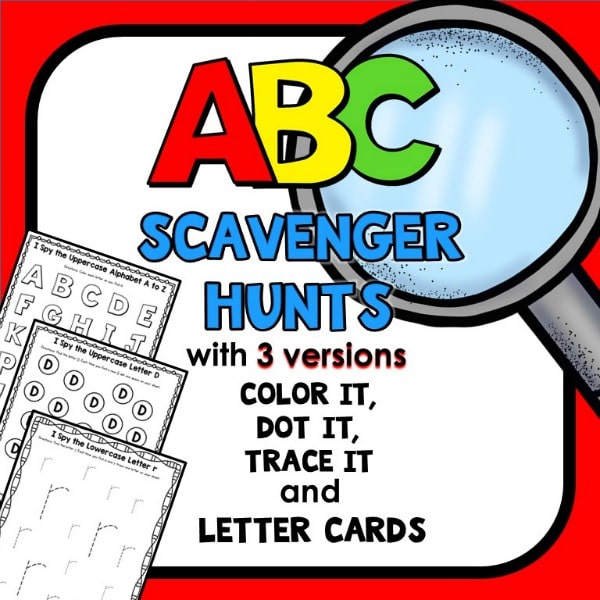
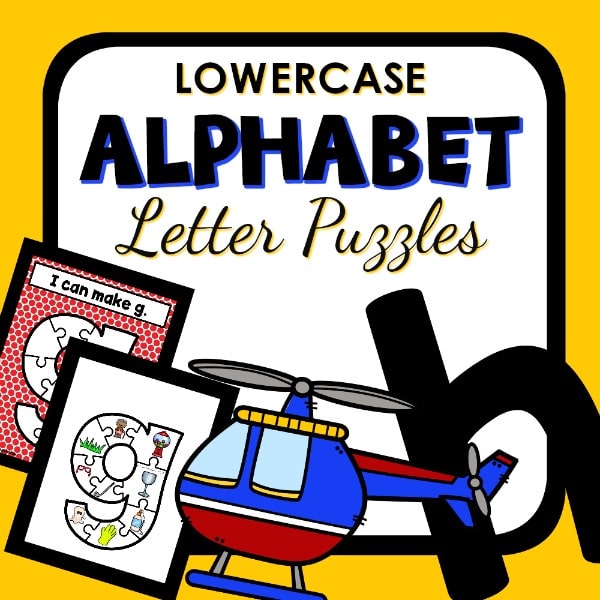
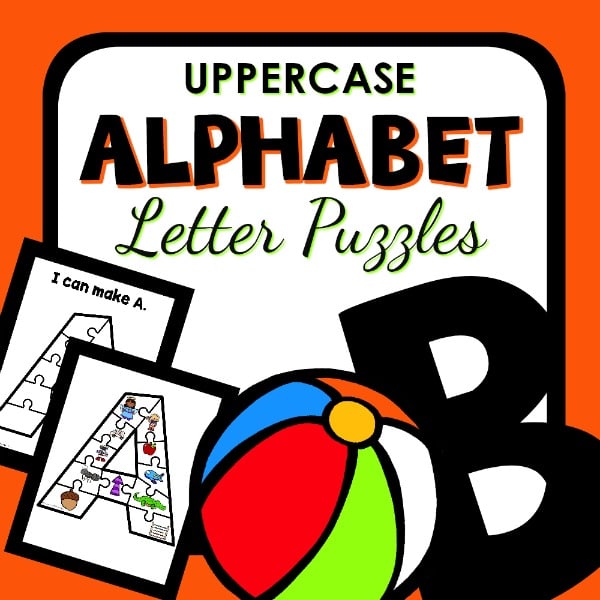
Thanks for sharing! I am going to incorporate some of these ideas into my next class!
I’m so glad you can find some of it useful! Let me know how it goes. 🙂
Great ideas! I really like that name book. I’ll have to remember it so I can use it with my son when he is ready to learn his name.
Thank you so much! I hope your son enjoys it (when that time rolls around). 🙂
I’m a new teacher of older twos and younger threes. Is letter of the week really bad? I organize my lesson plans like that but I wouldn’t say that’s all I do to teach letters. We have all sorts of things that would contribute to a ‘name kit,’ and we discuss the whole alphabet, not just the letter of the week. I’m just curious to know other people’s opinions. It seems like they’re learning and comprehending a lot and enjoying themselves.
I suppose “not as meaningful” would be the way I would describe it. Many teachers organize their plans based on letter of the week because that’s what works for them, and I am not judging that. It just makes more sense, in terms of how children learn, to relate letters to things they know. For the younger ones, I would think teaching the letters based on the initial letters in your students’ names would be the best place to start. Then add in environmental print and other names/words that are important to your students. Like you said, though, you’re not only focusing on one letter a week by itself (as some do). As long as the kiddos are playing, having fun, and progressing at an age-appropriate pace, that’s great! Perhaps pick one small way to step away from letter of the week and see how that goes for you? I love hearing other people’s opinions and thoughts as well! Thanks so much for stopping by, and I’m happy to keep up our discussion! 🙂
I have worked with many professionals and I am currently taking some classes. Everyone I talk to is very adamant that you DONT DO LETTER OF THE WEEK!!!! It just does NOT WORK. There’s some research behind it that backs them up.
Thanks so much for sharing your thoughts with us, Susan!
I really liked this post and pinned it along with your name kits. Thanks!
Thanks! I looooove your blog, by the way! Can’t wait to read more . . .
What a brilliant selection of letter idea.
Thanks for linking to The Sunday Showcase. I’ve pinned to our boards.
Thank you! I love checking out the Sunday Showcase each week. 🙂
Thanks – these ideas are great! I absolutely agree that whole alphabet activities should be part of our children’s learning. Regarding your thoughts about Letter of the Week… I never used that sort of thing with my older two kids; they picked up their letters with very little difficulty, mostly after a lot of reading and talking about letters. However, my third child was not catching on, so I have found that the discipline of going through each letter with lots of meaningful activities (math-related, forming the letter, crafts, movement, fine motor, songs, books, etc.) has made all the difference for him. I wouldn’t want to say that Letter of the Week has to be a bad idea – but perhaps I don’t know exactly how you’re defining it. I would love to hear more of what you think on this. I would also appreciate your thoughts on what I’m doing for each letter (see my website). I have just begun this and would certainly be interested in improving it. (I am a former teacher, but with an early elementary focus, not early childhood.) I found your website through In Lieu of Preschool’s link-up Will be following it!
Hi there, Anna! Thanks so much for taking the time to check out Fun-A-Day! 🙂 I don’t want to say that Letter of the Week is a “bad thing” either. However, I firmly believe that working within meaningful, contextual activities is the best way to teach children about letters, reading, writing, etc. When I refer to letter of the week, I mean creating a week for just one letter and only really focusing on that letter throughout the week. I will come by this weekend and spend more time checking out your site (when my head isn’t so stuffy)! 🙂 In my own opinion, if a child is having a difficult time grasping letters I would start with the letters in his/her name. Name books and tons of other name-related arts& crafts, tactile, and literacy activities would be my focus. There would be lots of little “mini-lessons” about the child’s name, what the letters do, the sounds they make, how they’re formed, and such. Also, the age of the child would play into any supplementary activities I planned. I’d love to talk more with you, so just let me know the best way to do so (email? here?). Thanks again!!
Hi Mary!
I’m sorry I missed this reply that you wrote so long ago. I checked a couple times and then forgot! Thanks for commenting on my blog today. I appreciate all your thoughts about Letter of the Week as well as the name idea… that’s a good one. My little guy is pretty young – not yet 3. He is starting to pick up his letters and numbers pretty well now — just not at a rapid pace. He enjoys doing the projects and activities I plan, but opts out when he’s not up for it.
No worries, Anna! 🙂 Glad to hear your little man is having fun. Moving at his pace is a great idea, especially since he’s not even 3. No need to stress him (or you) out — playing is the name of the game! 🙂
Hi! These are fantastic ideas for learning letters! I am also a former Reading Recovery Teacher. I see a lot of Marie Clay’s influence here as you are “following the lead of the child”. Love it!
Thank you so much! That is a huuuuuuuge compliment about seeing Marie Clay’s influence!! 🙂
I just came across this awesome post – I love it SO much, Mary Catherine! I wasn’t planning on introducing any organized letter recognition activities yet with my twins (they are only two), but my daughter has been showing a pronounced interest in letters and numbers recently and can already name quite a few letters along with their sounds (to my great surprise), so I am going to start incorporating some fun alphabet activities into their play. These are such great ideas- what a wonderful resource!
Thanks so much, Stephanie! I have a big smile on my face right now! 🙂 I love that some of my ideas can be used. In my opinion, if your daughter is showing interest then you should run with it! Just keep it fun and play-centered (and I’m sure you already do). 🙂
Thank you for the mention in this post, I appreciate it. Your specific examples of letter learning are spot on. Have you read Literacy Beginnings by Fountas and Pinnell? We did an online book study on it two years ago on the blog- fabulous read on this topic. The authors specifically address LOTW and why it’s not considered a best practice in emergent literacy. As a fellow RR and preschool teacher you will find it a good read 🙂
Hi Vanessa! Thanks so much for taking the time to stop by and leave me a note! 🙂 YES, that is a wonderful resource from Fountas and Pinnell, and I’ve read a variety of other books they’ve written.
Hello,
I came across this post as I am starting my first year teaching first grade. I found this post and links informative because I also believe children need to learn in context . The similar way in how sight words are taught. What are your thoughts on teaching that? I am worried about reaching especially my lower performing kiddos. Most of the basal instruction books given to us for intervention are meaningless. Any ssuggestions would greatly be appreciated.
Thanks so much for the kind words, Annie! I have a few ideas in “draft form” when it comes to sight words, so I’ll be sure to email the links to you when they’re done. I definitely agree that words need to be meaningful too, even more so for kids who are struggling. I’ll try to keep it brief, but here are some suggestions —
Lots of reading and writing together, even if you’re doing most of the reading and writing.
Keep a list of known words for each child, as well as a few words you want to work on with each child.
Make emergent readers on your own that contain the needed words. Have the child help you, and it will be more meaningful to him.
Use those magnetic letters — have the child make a word with you, then mess it up and make it again (kind of like when using the name kits).
I hope some of that is useful!
Thank you for this wonderful post! I had been planning to start a ‘letter of the week’ theme in September with my 4-year-old, but I’m seriously reconsidering now. You make many good points!
Thanks for stopping by, Emma! I can’t wait to hear how it goes with your 4-year old this fall. 🙂
I totally love this! I am sharing it with my blog Regarding Nannies for our creative nanny wednesday tomorrow September 4, 2013. Can’t wait to do some of this with my 3 year old nephew! Love the blog!
Thank you so much, Alice! I’m sorry for the delay in replying, though! How has your nephew liked some of the ideas??
Awesome post! Thank YOU! We homeschool- and I was wondering if you have any advise on a 6 year old (nearly 7) that is having difficulty retaining? No matter what we try (computer/ hands on/ writing/ coloring/ singing/ crafts/ food, etc) – she STILL can not retain them. We focus on them – and she “has it”- then the next day we are back to square one and she don’t remember what it is or what it says. She loves dictation- but she don’t know the letters or their sounds. I’ve had her evaluated – and apparently she has anxiety- but I think their might be more (maybe auditory processing, etc??) She is EXTREMLY visual. I’ve tried Alphabet Tales (make the letters “into” a character and the story goes with it)- but then she says that “b” SAYS “Bear Brothers” (not the “b” sound). I’m at a loss.
Thank you so much for your comment, Janiece. So sorry for the delay in replying — I didn’t see this until now. I am sorry to hear that your child is having some difficulty retaining information about letters. Since I don’t know her, I can’t really speak specifics. I would focus on activities and things she’s interested in, then try to relate literacy back to those things. Her name is always a great place to start, in my opinion. Additionally, I would get some specific information based on the assessment you had done previously. I know you homeschool, but it wouldn’t hurt to talk to your local elementary school for more information regarding how to best help her succeed. There are often resources they can point you to, as well as additional assessments. I hope my general response is somewhat helpful!
hii Mary,
I just came across this page and im so eager to learn more from you. my 3 years old son is having trouble identifying sounds and matching sounds to the right objects. i also just noticed he is not great with identifying colours. please i need your guide through this process of teaching him all this. please help. he is too playful to even sit and learn. i guess i have to utilize playful means in teachinh him as well.
Thanks so much for stopping by! You obviously know your child the best, so my suggestions would be just that . . . suggestions. For a 3-year old, I definitely think you need to keep it simple, fun, and quick. I would definitely start with the first letter in his name, as names are so important to children. Talk to him about the first letter and the sound it says in a conversational manner. There’s no need to sit down to learn this . . . just use it as part of a conversation. For example, if his name is Bob, you might say, “Bob, let’s see if we can find 2 of your toys that start with the b sound. Hmmm . . . does train start with your sound? Noooo . . . what about ball? Yes! I hear it .. .. b b b . . . ball!” Super simple conversations while playing are a great way to start!
Hi,
I was wondering your thoughts on teaching sight words? I have 3 of my lowest who can decode, but sight words are low. They are on level C. I came across sight word books on the reading az website, but they’re not leveled. I want to be able to teach them other strategies to.increase their reading levels. Do you have anythoughts? Reading your blog has been helpful.!
Hi Annie! Obviously, I don’t know your kiddos like you do, so I can only speak in a general sense here. I need to put a post together about this exact topic! Creating books that are meaningful to the children, and that include the sight words they need to work on, can really help. Having a word wall that you slowly add words to is another suggestion. Doing fun activities with the words can help — rainbow write the words, make them using magnetic letters, write the words in sand, etc. And, of course, tons and tons of reading to the kids — picture books, large shared reading books, all kinds of books. I hope I’ve helped a little bit. 🙂
Thanks for this! I had a panic attack when I saw a bunch of “letter of the week” posts on Pinterest. I’m too scatterbrained for that! I’m relieved to know that it’s not necessary. I like your alternatives much better!
Thank you so much Tiffany!!!
I am so thankful I came across this post! I have been teaching Pre-k for 4 years and have been doing “letter of the week” well because that’s just what you do 🙂 I always felt I wasn’t challenging them enough. I tried to fin other ways of teaching but nothing stood out until I read your blog. I appreciate your knowledge and thought into teaching letters.
Our director is feeling pressure from our parents regarding “academics” and has told us that she wants to add Handwriting without tears to our program. Do you have any thoughts on this program?
Again, thanks so much for this, I’m so excited to start implementing some of your ideas starting on Monday! 🙂
-Connie
Connie, thank you so much! I have heard good things about “handwriting without tears” and I know some of it is based on research. I don’t completely believe everything they say about developmentally appropriate practice, but I’ve heard it does a good job! I still firmly believe that academics are best taught through play, so you can still focus on it in a way that’s meaningful for kids. 🙂
This is a really great. Having the lessons incorporated with their friends names will really help them remember it well, and these activities will give them meaningful memories that will help them develop the skills in reading and identifying letters.
Thanks and I hope you won’t mind me sharing this to other people.
Jennifer, thank you oh so much! Feel free to share it with others, and I appreciate your feedback!
I had some questions about small group time and was hoping you could email me so I could ask you about it! Thank you!
Sure thing – there will be an email coming to you from rda.of.fun@gmail.com. 🙂
Learning the alphabet is important for preschoolers. Alphabet activities can help preschoolers learn to recognize letters and sounds.
Definitely!
I know this is an older post but I’ve just found it and I’m so glad I did!!! My daughter just turned 4 and knows about 1/3 of her alphabet. Mainly the letters in her name and some others that have just left some sort of an impact with her, so she remembers them. Her teacher does letter of the day during circle time. Ive observed the class a few times to help. My daughter is phenomenal during story time remembering every detail after just hearing the story once. Loves experiments, participates and helps like crazy and loves arts and crafts. But letters are so incredibly boring to her, she just glazes over. And the letter of the day during circle time just isn’t cutting it. She’s too distracted and uninterested. So, I’ve been looking for any and all types of ways to help in order to supplement. Thanks for posting this!!!!!!!!
Oh I’m so glad that you’ve found some helpful ideas! I’m going to be updating this post soon (oh those photos are a bit old 😉 ). Feel free to touch base with any questions or for more ideas.
I am so glad that Google helped me find this blog entry! I have an almost three year old and I was wanting to start some simple but meaningful letter education with him. I am a former elementary teacher and had seen and taught many letter of the week lessons but that just wasn’t what I was looking for for him. And then I found this and it’s perfect! I wanted meaningful and that’s exactly what I found. Thanks so much! I’ll be rifting through your other entries for more goodies to include in my plans for our future.
So happy to hear I can be of some help, Bethany!!! 🙂
I have been teaching for many years and using LOTW. I really love this idea; but, I guess I’m so set in my ways, that I can’t quite get my head around this awesome technique.
How do you pick a letter to practice writing for the class?
Thank you for your help.
I prefer meaningful writing activities. We might be writing in journals, doing a modeled or interactive writing lesson, or reviewing friends’ names. I’d pick letters we’re already authentically using to practice. So if I’m modeling how to write “go”, I might say, “This is how we write o. Now you use your finger and write an invisible o on your arm!” The point is to work it in during meaningful activities we’re already working on.
Where do you put names that have an initial letter whose sound differs from the common sound of the letter on the word wall.
Example Jose-starts with J but has /H/ sound
Or
Shelly- Starts with S but has /sh/ sound
That’s a great question, Stephanie! I always put them underneath the letter they start with. Then I use them as examples to talk about the different sounds letters can make in ways that don’t overwhelm the kids. So Shelly would be a great one to use when talking about how two letters can sometimes work together to make one sound (digraphs) – then we’d come up with other words like that. Jose would be a great way to talk about how letters can make different sounds in different languages.